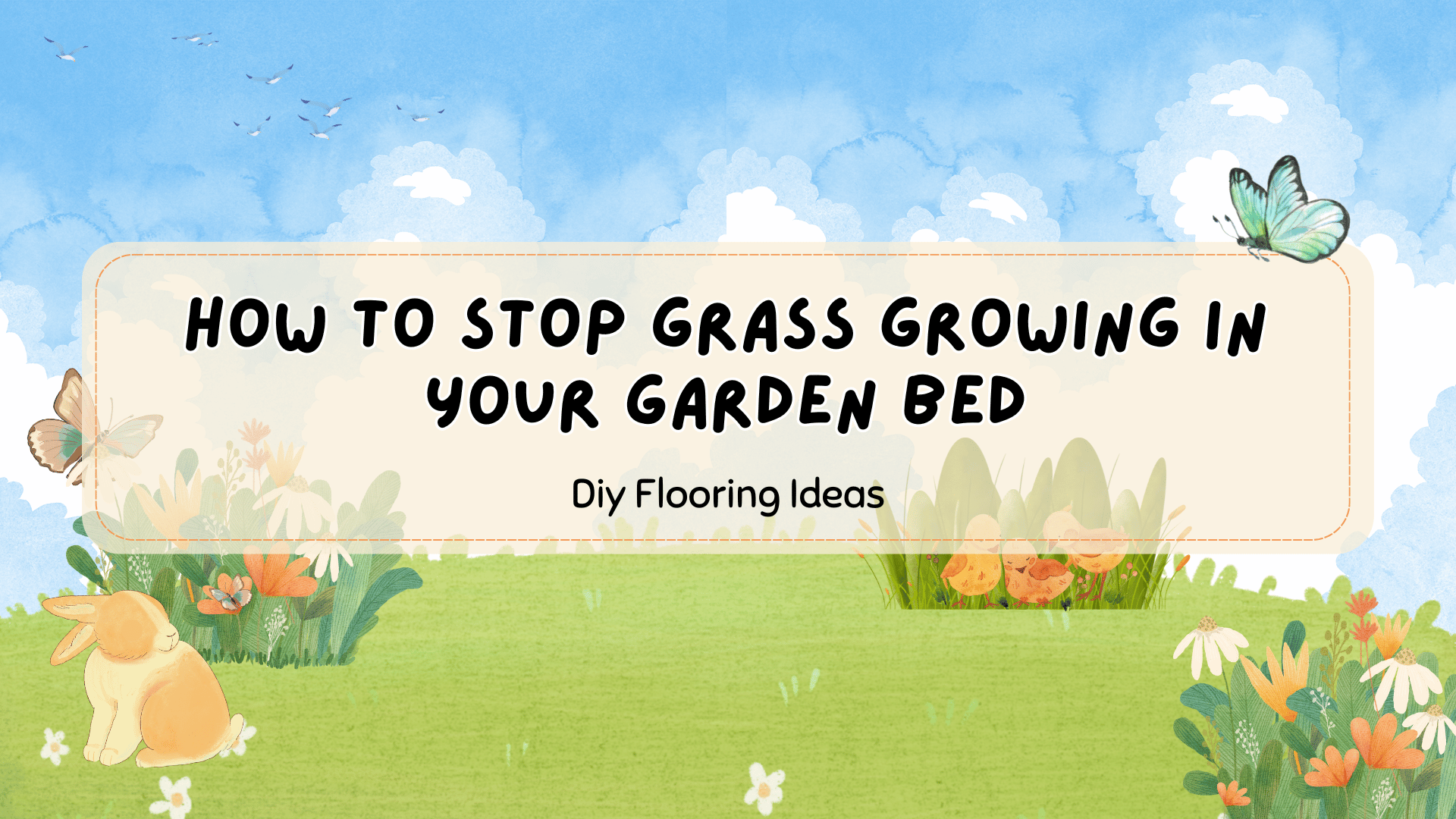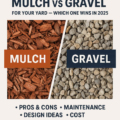To quickly prevent grass from overrunning a garden bed, attack the problem on all fronts. Use physical barriers (like buried edging) to block runners, smother any existing grass with thick mulch or cardboard, and spot-treat with grass-specific herbicides if needed. In practice, the best results come from combining methods and dealing with grass invasions early, before roots get established deep.
Physical Barriers (Edging and Borders)
A sturdy border around your flower or vegetable bed creates a clear division that blocks grass from creeping in. You can cut a trench or install edging material (steel, plastic, brick, stone, etc.) at least 4–6 inches deep between the lawn and bed to keep grass roots from growing under. For example, in well-defined beds gardeners often use lawn edging strips, concrete blocks, or metal flashing sunk vertically into the soil. These borders “protect your plants by keeping weeds or other grasses out”.
- Plastic or metal edging: Install flexible or rigid edging strips along the bed perimeter. Make sure they extend deep enough that runners (like those of Bermuda or couch grass) cannot pass under.
- Natural stone or brick border: A row of rocks or bricks can be mortared or simply buried partly into the ground as a barrier.
- Spade (English) edge: Dig a V-shaped trench with a half-moon edger or spade between lawn and bed. This classic “English border” creates a shallow trench that makes it easy to slice off any grass runners as they appear.
The key is a physical divide. Once in place, it should be checked periodically. (Use a string or hose to outline new bed shapes, then cut a crisp edge along it.) With firm edging in place, grass has no easy path into the bed.
Mulching and Smothering
Blocking light is a natural way to stop grass. Cover the bed with a thick, opaque layer of mulch to starve grass of sunlight. Use 3–4 inches of organic mulch – wood chips, shredded bark, straw or pine needles – spread evenly over the soil. The mulch layer should completely cover any exposed ground. Over time, grass seedlings and shallow-rooted grass stems underneath will wither without light.
For even tougher grasses, use a cardboard or newspaper “blanket” under the mulch. Lay down overlapping pieces of unprinted cardboard (or 3–4 layers of newspaper) across the bed, then wet them and pile mulch on top. The cardboard blocks sun and gradually breaks down, which can smother entrenched grass. One grower found success by cutting cardboard flats into two layers and overlapping edges by several inches to prevent any light gaps. As the cardboard decays, it also adds organic matter to the soil.
- Key tip: Keep mulch and cardboard in place for at least a full growing season (better yet, two) to ensure perennial grasses die off. Monitor the bed and reapply mulch where it thins out.
- Mulch choice: Stick with weed-suppressing mulch like wood chips or bark. Avoid grass clippings or hay, which can introduce more weed seeds.
Finally, you can try solarization for a completely chemical-free kill. In hot months, cover the soil with clear plastic sheeting and seal the edges. The trapped heat will “cook” grass roots and seeds over several weeks. (Be aware this also sterilizes topsoil, so only do it before planting or on empty ground.)
Chemical Control (Herbicides)

When manual methods aren’t enough, a targeted herbicide can finish off grass without harming your desirable plants. Look for a grass-specific (selective) herbicide labeled for ornamentals. Active ingredients like clethodim or fluazifop (often sold under names like “Grass-B-Gon” or “Envoy”) will kill grassy weeds but leave broadleaf flowers and shrubs unharmed. Always read labels to make sure your planted species are safe. Apply these selectively onto grass blades as they grow.
For very persistent patches, a non-selective herbicide (glyphosate) will kill all vegetation it contacts. Use glyphosate carefully: spray only on the grass leaves, and shield nearby plants with cardboard or plywood to avoid drift. Glyphosate penetrates to the roots, effectively killing the grass if done properly. Be sure to choose a glyphosate-only product (no added soil-active chemicals) and follow all safety instructions. It’s best applied on calm days, when the grass is actively growing. After application, wait a week or two and pull out any brown, dead grass debris.
Other Removal Methods
Sometimes simple hands-on tactics help:
- Hand-pulling: Pull out small grass patches by hand or with a weeding tool. Try to remove the entire root. This works best when the grass is young and soil is moist. (Beware: some grasses like Bermuda send up runners underground, so you may need to dig several times.)
- Digging or hoeing: Use a garden hoe or a sharp spade to cut grass clumps out of the soil. For warm-season grasses, dig deep to get rhizomes.
- Boiling water: Carefully pour boiling water onto small grassy areas. Boiling water acts as a contact herbicide. It will kill the foliage it touches, but it will also kill any nearby plant, so use it only on bare spots or isolated weeds. This method often needs a second application in a week or two, as one pour rarely kills established roots.
- Vinegar spray: Household vinegar (5% acetic acid) or stronger horticultural vinegar can burn off grass shoots. Vinegar is non-selective and only works on contact, so it only kills the top growth and not the roots. Grasses frequently regrow after vinegar because the roots survive. If used, it’s best on tiny seedlings or as a spot treatment where nothing else is planted.
Prevention and Maintenance
Keeping grass at bay is an ongoing task. Here are some maintenance tips:
- Edge regularly: Even with a barrier, grass can sometimes creep over. Run a spade or edger along the border every few weeks to sever any runners.
- Mulch upkeep: Replenish mulch yearly. As mulch breaks down, gaps can appear. Maintaining a thick 3-inch layer continuously shades out new grass seeds.
- Weed on sight: When you spot a stray grass sprout, pull it immediately. Early removal (before it flowers or spreads) saves big headaches later.
- Pre-emergent herbicides: In early spring, you might apply a pre-emergent (like corn gluten meal or a chemical such as trifluralin/Preen) to the bed. This prevents new grass seeds (e.g. crabgrass) from germinating, though it won’t affect already-growing grass.
- Healthy plants: Dense, vigorous garden plants shade the soil and leave less room for grass. Keep your beds well-watered and fertilized so that your flowers and veggies fill in and crowd out weeds.
By mixing these strategies — a tight border, heavy mulching or cardboard, spot herbicide as needed, and regular weeding — most grass problems can be controlled. It might take a season of effort, but once a bed is cleared and insulated, it’s much easier to keep it grass-free.


